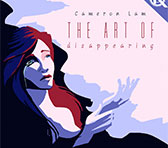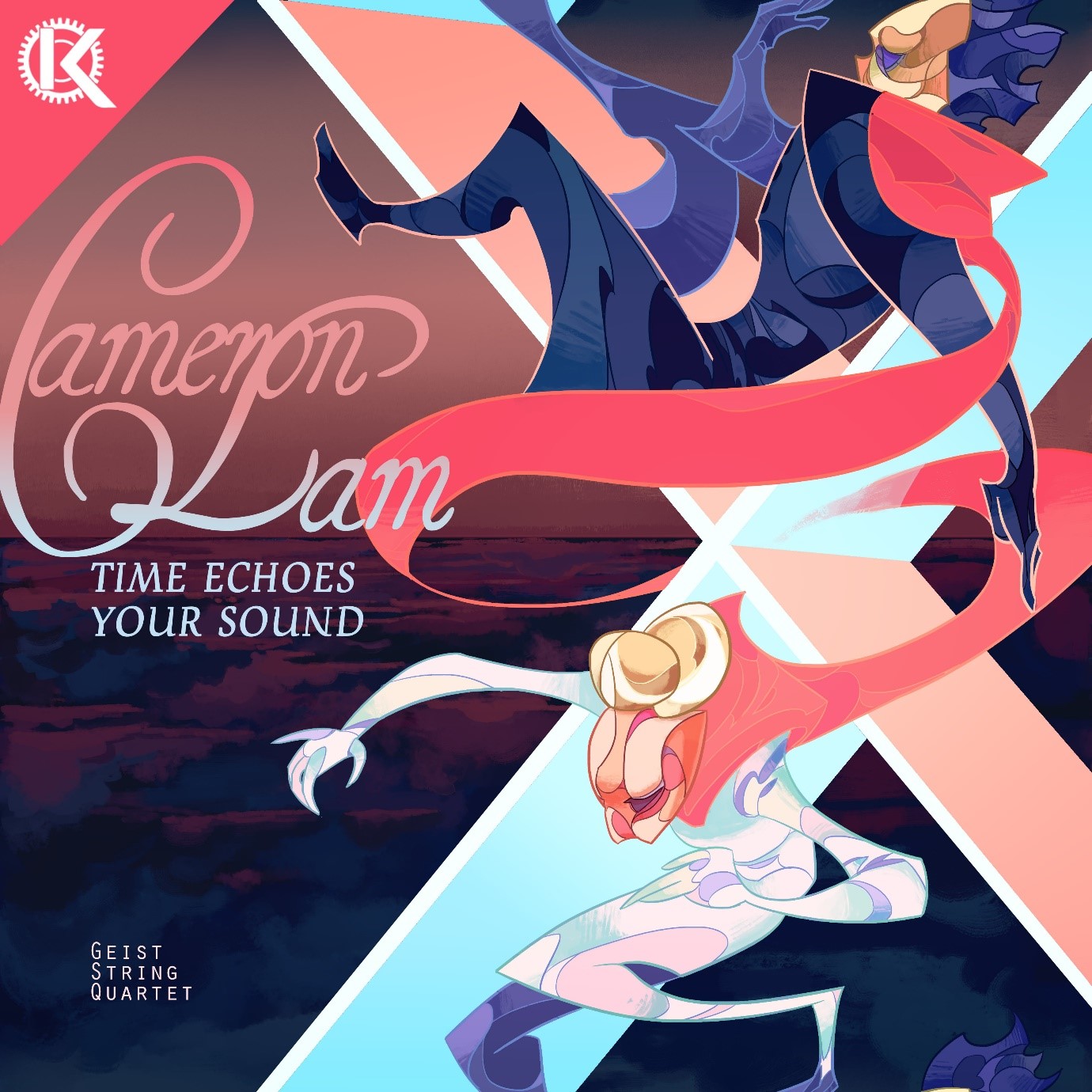31 May 2019
The Art of Disappearing
 Image: The Art of Disappearing cover art by Luke Moseley
Image: The Art of Disappearing cover art by Luke Moseley Cameron Lam, who has recently returned from the Classical:NEXT industry event in Europe (read his report), used some of his first jetlagged hours back on the home soil to explain his latest work The Art of Disappearing - the album is out, and the world premiere of the new work takes place on 1 June in Annandale, Sydney.
There are a few big questions that have stuck with me since my Bachelor degree at the Sydney Conservatorium. Who is your audience? Why would someone play this piece over anything else? What does this piece add to the repertoire? Huge questions, and I don't have simple answers - but I think my new song cycle, The Art of Disappearing, brings me closer to being able to wrestle with the questions and their underlying assumptions.
I'm a bit of a poetry magpie (I've had to ban myself from bookstores for months at a time because my eyes are bigger than my stomach), and poetry is often my go-to when I'm struggling with composer's block. The structure, and focus on a subject, tend to be good jumping-off points. When I ran into Queensland writer Sarah Holland-Batt's poem, 'The Art of Disappearing' in an anthology entitled Contemporary Australian Poetry, it hit me like a brick. It felt personal, surefooted and strong. It had a natural musicality. It invited me to come play. I literally couldn't do anything but stare at this poem for 20 minutes. Who was this poet?
My music has always been closely aligned with movement - I go for walks in tempo when I'm stuck mid-piece and dance when it's all working. 'The Art of Disappearing' astounded me because this poem had its own musical sense, and it struck me still yet made me want to move all the more. It was going to lead this dance and I was going to have to work hard to keep up.
After getting the blessing of Sarah and her publisher University of Queensland Press, I ended up selecting seven poems from her first book, Aria. Together I could see them telling a story of reminiscence, grief and loss. The power of the everyday to be comforting or utter alien is palpable here.
Knowing this would be a large-scale work, I called in reinforcements; writing for friend, mentor and mezzo soprano Jenny Duck-Chong was a heaven-sent. It's also a joy to write for a voice you've listened to for 12 years!
Practical consideration also had to come into play - how many people program large song cycles? How else could this be performed? Having recently completed Yggdrasil: The World Tree, a concerto for contrabass clarinet and wind symphony, I wanted to turn my attention to string writing. By adding four instrumental interludes, these could also form the movements of my second string quartet, giving me another work to program and a way to make the project modular.
Thanks to Fine Music 102.5FM's 2018 Stephen Kruger Scholarship, I got to invest myself in writing the work over an extended time period, going into the studio to record with Jayson McBride. I spent just over 12 months writing the work, discussing and workshopping with Jenny, pushing myself to explore techniques and concepts I've always wanted to try.
The role of performer has always been fascinating to me, both as
experts in their craft but also in their role as interpreters -
taking musical instructions and realising them for audience as
performance and sound. So, I went to explore choice in this work,
giving performers further agency to choose and invest in their
interpretation of each piece.
'Enduring Ritual' (see image) is the most overt examples of this
- the musicians choose which line they play at different
junctions. Each performer chooses their own path through the
work, the music staves twist and turn like train lines at
junctions, cutting off possibilities and forcing decisions on the
players. These choices are independent, but my heart almost burst
when listening to the Geist String Quartet rehearsing and putting
the puzzle pieces together 'What did you play then? That
sounds really good with my line here - how can I tell when you're
going to make that choice?'
This process is particularly noticeable with the vocal line; the different combinations of lyrics create very different stories. I'm normally a very linear text-setter and 'Enduring Ritual' explodes the poem in every which direction. Jenny Duck-Chong and I had multiple chats about this as I moved from poetry to flowcharts to notation with scribbles to, finally, the finished product. The middle section of the piece is repeated three times to encourage exploration but, given the vocal part splits, in six lines, it's never possible to hear all of the music written.
'Athenian Jar' follows a similar process: a singer narrates a poem while the string quartet players follow pathways between events (see left). Growing up I was always inspired by games. Card games, board games, video games - it didn't matter - I loved how a simple set of rules led to hours of fun - testing yourself, interacting with others, exploring.
While videogame music of the '80s and '90s is still an important influence on my music, trying to capture that feeling of play and interaction is the stronger legacy of those memories. Time is another element that allows expressivity to come to the fore. The first instrumental interlude (and movement of my string quartet), 'Synchronous Time', features two pieces being played simultaneously and the players move between different timelines to create an excellent interweaving effort between the two tempi and motives.
Each timeline is written out as seen on the left, showing the relationships graphically rather than metrically - I'd rather players focus on the expressivity of the line rather than trying to franticly subdivide - you can hear it in the playing.
This focus on choice and collaboration extends to my cross-artform practice with Kammerklang as well. I asked long-time friend and collaborator, Louisa Poletti, to create a dance work based on the instrumental movements, from my String Quartet No.2 'Time Echoes Your Sound'. Much like setting poetry, I gave Louisa free reign to create as she wanted, resulting in an amazing 22-minute dance film - you can watch it in instalments on Vimeo Ep. 1; Ep. 2; Ep.3; Ep. 4.
Louisa remarked on this process: 'Working with a composer is an interesting experience, as one is able to get a much clearer idea of the original intention of the piece. In the case of 'Time Echoes Your Sound', I wanted to keep the intentions behind the music in whatever story I told with the film. As a result it was very helpful to have someone to speak to about the meaning behind each movement. This helped me craft the story, choose a location and also create each movement to be in-keeping with the original intention. On top of this we decided, a bit later in the process, that each piece should have a standalone video work. Without contact with the composer at the right stage of the process, this would have been a rather difficult challenge as I would have approached the process differently without this knowledge.'

I also commissioned Melbourne artist Jennifer Reuter to create
cover art for the String Quartet, both for the score and the
digital EP currently on Spotify. I gave her the
music and videos as inspiration - see her vibrant final product
on the left. Jennifer's comment about her work process is
interesting:
'During the time I worked on Time Echoes Your Sound, I
went through a stage of learning the meaning of vulnerability, or
a search for close relationships. Naturally, I saw in the music
and dance that eerie sense of social disconnect I felt; searching
for meaningful interaction, fearing dissonant conflict, and the
grief of loneliness to escape it. But Cameron and Louisa's work
is also beautifully abstract, and I have a soft spot making
things connect through space-bending ways.'
I love that this mammoth project, itself about intimacy, loss, and connections, became a way to share ideas and creative impetus across artforms. From Sarah's poetry, my music, Louisa's choreography and film to Jennifer's and Luke's cover artworks - The Art of Disappearing highlights how universal themes can be, and how inspirational art can be when artists are given free-reign to respond.
So, back to my initial questions.
Who is your audience? People seeking connections, to text, to art, to music and experience of our time.
Why would someone play your piece? Because they would like to be an active player in the stories we create together for our audience.
What does this add to the repertoire? A focus on the key role interpreters and collaborators add to our practice. And, the relevance of live music when the score can change so drastically between performances.
I will keep answering these questions for a long time to come. But in the meantime, my current response, The Art of Disappearing, is there.
Further links
Cameron Lam - AMC profile
'The Art of Disappearing' - event details 1 June, Annandale Creative Arts Centre (AMC Calendar)
The Art of Disappearing - album (Bandcamp)
© Australian Music Centre (2019) — Permission must be obtained from the AMC if you wish to reproduce this article either online or in print.



Comments
Be the first to share add your thoughts and opinions in response to this article.
You must login to post a comment.